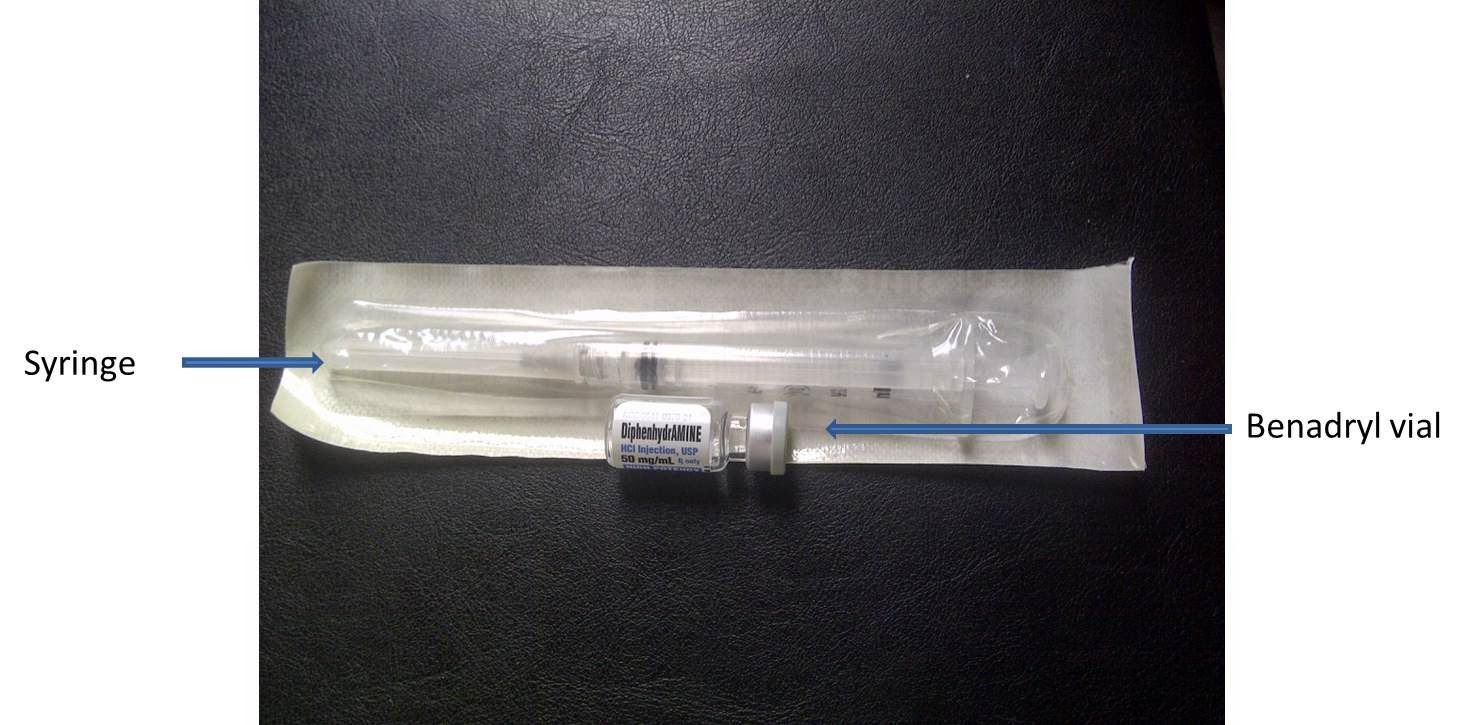I am not a medical professional.
I’m providing the steps that I use for infusing antibiotics. You should follow the directions provided by your health care professional!
Due to the (small) chance of (possibly severe/deadly) allergic reaction to antibiotics I insist that someone observe me while I give myself this infusion.
I have to use Benadryl before each infusion (more on that later). Benadryl makes me sleepy, REALLY sleepy. So I do not plan to do anything for a couple of hours after receiving IV Benadryl – I often sleep for 2 hours. I also try to plan ahead and ensure I’ve done the following before starting the infusion process.
Before starting:
- Eat
- Drink
- Use the restroom
- Get comfortable
Items needed:
- Sanitizing wash
- Alcohol swabs (at least 3)
- Saline Flush x3
- Benadryl vial
- Syringe x2 (one will be used for Benadryl, the other is for epinephrine in case of severe allergic reaction)
- Epinephrine vial (in case of severe allergic reaction)
- Antibiotic bulb (stored in refrigerator, but “warmed” for a minimum of 2 hours before use)
- Heparin flush
Items used for infusion:
Items needed in case of allergic reaction
In case of any allergic reaction, give Benadryl:
In case of severe allergic reaction, give epinephrine and call 911:
Steps:
- Wash / Sanitize hands
- Sterilize PICC line port with alcohol swabs
- Clear air out of saline flush #1
- Connect saline flush, open all clamps, and slowly flush out PICC line
- Load syringe #1 with 0.5 ml (0.25 mg) IV Benadryl (diphenhydramine)
- Connect Benadryl syringe and inject it over 1-2 minutes
- Sterilize PICC line port with alcohol swab
- Clear air out of saline flush #2
- Connect saline flush #2 and slowly flush out PICC line
- Connect IV antibiotics
- Open antibiotics clamp (infusion takes 30-40 minutes)
- Sterilize PICC line port with alcohol swab
- Clear air out of saline flush #3
- Connect saline flush #3 and slowly flush out PICC line
- Connect Heparin flush and slowly flush out PICC line
- Close clamps
Getting my IV antibiotic (the bulb does not need to be elevated, I was just playing with it :) )
 |
| IVanz IV antibiotic infusion |
 |
| Saline flush of the PICC line after infusion |
 |
| Tygacil IV antibiotic infusion. Not feeling very well anymore. The rubber chicken is my good luck talisman |






